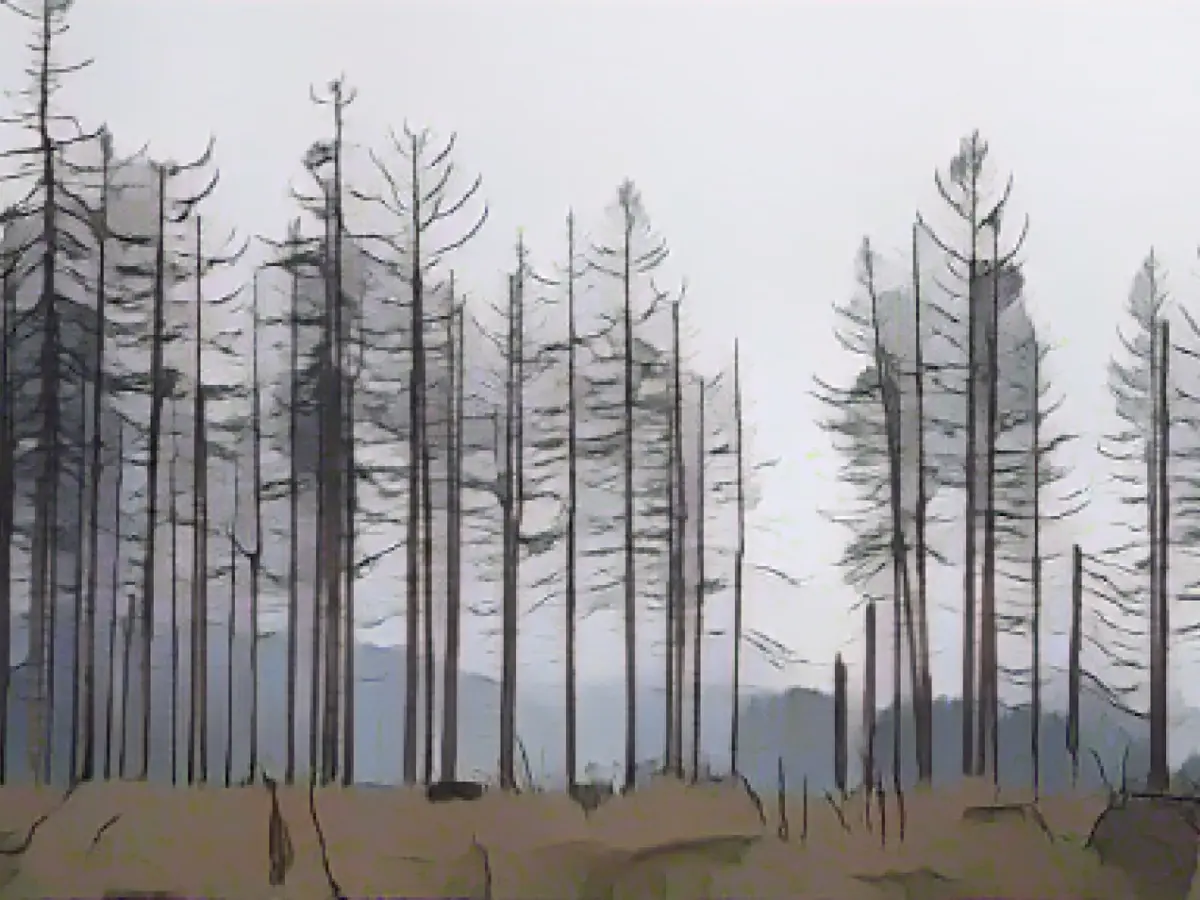Forest Woes in Lower Saxony Spark Concerns
The state of forests in Lower Saxony continues to worry authorities. Forestry Minister Miriam Staudte (Greens) voiced her concerns in Hanover, stating, "The forest in Lower Saxony is still in a very precarious state." She further highlighted that the percentage of severely damaged trees has surpassed the long-term average for the fourth consecutive year (Staudte, 2023).
The annual Forest Condition Report, published by the Northwest German Forest Research Institute and the Ministry since 1983, sheds light on this troubling trend. The report documents the impact of harsh weather, harmful substances, climate change, and pests on forests in Lower Saxony.
Staudte explained that the adverse weather conditions of several years have taken a toll on the forests. However, favorable weather in 2023 prevented further deterioration, as the past vegetation year was warm but also had sufficient precipitation. The cloud-thinning, a visible loss of needles, and leaves in the tree crowns, are indicative of the forest's struggle to cope with climate change. Spruce trees, like those in the Harz Mountains, have been especially hard-hit in recent years, with other areas now experiencing a continuation of this trend (Staudte, 2023).
Beech and oak trees have also shown noticeable responses to the dry years, albeit to a lesser extent than spruce. Pine trees, however, have fared better (Staudte, 2023). The report suggests that native oak species have potential as a "ray of hope" for future forestry practices, as their adaptation possibilities may not yet be fully exploited (Thünen Institute, 2024).
Staudte advocated for a shift towards mixed forests to diversify risk and adapt to the uncertainty of future climates. Long-term planning in forestry can be complex and challenging due to this uncertainty (Staudte, 2023).
Ulrike Talkner of the Northwest German Forest Research Institute emphasized the urgency to minimize climate change's impact on forests, as they have already suffered significantly from climate change. She advocated for implementing measures to curb climate change as much as possible to protect the forest and maintain its vital role as a carbon sink (Talkner, 2023).
Key Insights
- Forestry Minister Miriam Staudte expressed concerns about the high proportion of severely damaged trees in Lower Saxony's forests due to climate change.
- The Forest Condition Report documents the impact of harmful substances, weather, climate change, and pests on forests in Lower Saxony.
- Spruce trees are the most affected species, with pine showing the least damage, according to the report.
- Staudte suggests focusing on mixed forests to diversify risk and adapt to uncertainty in future climates.
- Talkner emphasizes the need to curb climate change to protect the forest and maintain its function as a carbon sink.
Relevant Enrichment Data
- Biodiversity: Forest soils are important for various living organisms alongside trees. They also act as a significant carbon store (Thünen Institute, 2024).
- Sustainable Measures: To boost forest resilience, diversity of tree species, adaptive forest management, remote sensing, sustainable coastal development, and integrated policy planning can be considered (Senf et al., 2020; Senf and Seidl, 2021b, Bolyn et al., 2022; Blickensdörfer et al., 2024; Meinke, 2025).
Sources:
- Staudte, M. (2023, May 26).
- Thünen Institute of Forest Ecosystems. (2024).
- Bolyn, et al. (2022).
- Blickensdörfer, et al. (2024).
- Senf, et al. (2020).
- Senf and Seidl, (2021b).
- Meinke, (2025).








